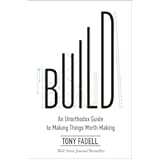Day Trading NASDAQ for Quick Profits: Understanding the Strategy Behind a $4,500 Win
In a compelling demonstration of focused strategy, a remarkable profit of approximately $4,500 was generated in just 10 minutes through targeted day trading on the NASDAQ. As was seen in the accompanying video, this swift success was achieved by leveraging specific market conditions and technical analysis. The trade, executed at the market open, perfectly illustrates how keen observation of price action, particularly around resistance levels, can lead to significant gains within a very short timeframe. However, such results are not merely a stroke of luck; rather, they are typically the culmination of disciplined observation and understanding of market dynamics.
The Power of Resistance in Day Trading NASDAQ
When discussing market movements, the concept of resistance is frequently encountered. This term refers to a price level where upward momentum is expected to halt or reverse due to a concentration of selling interest. It can be thought of as a ceiling that the price finds difficult to break through, much like a ball hitting the top of a doorway. In the context of the NASDAQ, recognizing these key levels is paramount for day traders, as they often provide crucial junctures for decision-making. Prices are often observed to retest these barriers multiple times, indicating the strength of the selling pressure at that point.
Observing a price approach and then fail to break above a resistance level, which is known as a rejection, is a strong signal for traders. A single rejection might be considered a preliminary sign, yet repeated rejections, as demonstrated in the video, significantly bolster the bearish sentiment. This repetitive interaction signals that sellers are consistently stepping in at that price point, effectively pushing the price back down. Therefore, when resistance holds firm, especially after being tested multiple times, it is often interpreted as an invitation for short positions to be opened.
Navigating the Market Open: A Strategic Advantage for Day Trading
The market open is often considered a pivotal period for many day trading strategies, and for good reason. During these initial minutes, volatility and liquidity are typically at their peak, creating amplified price movements that can be exploited for quick profits. A surge of orders, both from pre-market activities and new participants, floods the market, causing prices to swing more dramatically than at other times of the day. This heightened activity can be likened to the initial burst of energy at the start of a race, where many participants are eager to establish their positions.
For traders focused on the NASDAQ, the opening bell presents unique opportunities to capitalize on these rapid shifts. While the increased volatility also carries inherent risks, it provides the fertile ground needed for quick, high-impact trades like the one showcased. Precise entry and exit points become even more critical during this window, as prices can move against a position just as quickly as they move in its favor. Therefore, a clear strategy, like identifying resistance and waiting for rejections, is often deployed to harness this energy without being overwhelmed by its speed.
Decoding Rejection Signals: When to Enter a Trade
The art of day trading frequently involves discerning clear signals amidst the market’s noise. A “rejection” from a resistance level stands out as one such significant signal, indicating a strong likelihood of price reversal. When the price of a NASDAQ stock or index attempts to push past an established resistance point but then swiftly pulls back, it is understood that the sellers have successfully defended their territory. This pattern serves as a powerful confirmation that the resistance level is holding firm, and buyers are losing their momentum. Analogously, this can be seen as a batter repeatedly failing to hit a pitch out of the park, suggesting the pitcher’s strategy is effective.
Crucially, the strength of a rejection signal is often amplified by its repetition. As was clearly shown in the video, a second rejection following an initial one strongly reinforces the conviction of a downward movement. This dual confirmation suggests that the resistance is not merely a temporary barrier, but a robust ceiling that the market struggles to breach. For a day trader, such a double rejection provides a higher probability entry point for a short trade, allowing for a more confident decision to be made when engaging in day trading NASDAQ indices.
The “One-to-One” Rule: Mastering Risk Management in Day Trading
Effective risk management is the cornerstone of sustainable success in day trading, and the “one-to-one” rule is a fundamental principle that helps to protect capital. This rule dictates that for every dollar of potential profit sought, no more than one dollar should be risked. In simpler terms, if a trader aims to make $100 on a trade, the maximum allowable loss on that same trade should also be $100. This balanced approach to risk and reward ensures that a string of small losses does not disproportionately impact a trading account, maintaining a healthy equilibrium. It’s like balancing a seesaw, where the weight on both sides is kept equal.
Implementing a quick one-to-one profit-taking strategy, especially when day trading NASDAQ or other volatile instruments, is often a prudent decision, particularly towards the end of the trading week. As exemplified in the video, exiting a trade once the initial profit target is met, rather than attempting to hold for extended gains, significantly reduces exposure to market uncertainty. Fridays, in particular, can be characterized by reduced liquidity and increased unpredictability as traders close positions ahead of the weekend. Therefore, a swift exit with a defined profit target is frequently favored to lock in gains and minimize overnight or weekend risk.
Essential Considerations for Beginner Day Traders
While the allure of rapid profits from day trading NASDAQ is undeniable, it is important to approach this endeavor with proper preparation and a realistic mindset. Success, as depicted in the video, is often the result of disciplined execution of a well-understood strategy. For those new to the world of financial markets, several considerations should be prioritized before attempting live trades.
- **Continuous Learning:** The financial markets are dynamic; therefore, strategies and knowledge must continuously evolve.
- **Practice with a Demo Account:** Before committing real capital, paper trading allows for the application of strategies in a risk-free environment.
- **Start Small:** When transitioning to live trading, it is recommended that only a small portion of capital be utilized, gradually increasing as proficiency is gained.
- **Understand Market Mechanics:** Grasping basic technical analysis, such as support and resistance, trend lines, and volume, is fundamental.
- **Emotional Discipline:** Trading decisions should be based on analysis, not emotion. Fear and greed are often cited as significant hurdles.
- **Capital Preservation:** Always prioritize protecting your trading capital over chasing large profits.
Emulating successful trades, like the $4,500 profit earned by day trading NASDAQ in just 10 minutes, requires diligent effort and a commitment to mastering the necessary skills. It is not merely about finding a single strategy, but about understanding market context, managing risk effectively, and maintaining consistent discipline.






